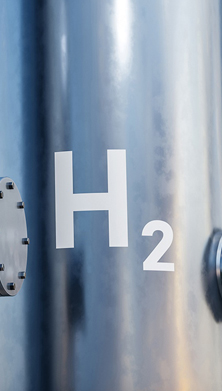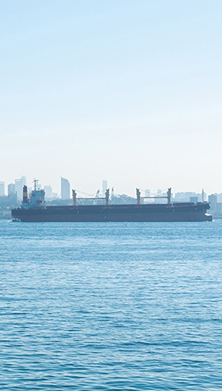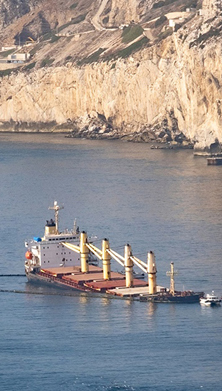“We were the caretakers of Notre Dame. We failed,” announced a New York Times article reacting to the fire that ravaged the almost-eight-centuries-old cathedral in Paris last April. It summed up the feelings of regret and shared blame that came in the fire’s wake.
Images of the gothic cathedral as it crumbled from one of the world’s most-visited and beloved attractions to a hollowed-out ruin shook the world, leaving many asking how it could have happened.
It is a prevailing question when it comes to the failure to prevent fires. How can it be, especially in the case of Notre Dame – a particularly precious jewel in the French and European landscape – that, even with higher fire protection standards than ever before, such incidents continue to devastate buildings and businesses throughout the world?

Fire/explosion incidents rank as the number one cause of loss for businesses worldwide, having caused in excess of €14bn ($15.7bn) worth of damage from more than 9,500 claims over the previous five years, according to the AGCS Global Claims Review: The Top Causes of Corporate Insurance Losses. This comes in contrast to the inception of the first ever International Fire Safety Standard (IFSS) coalition in July 2018, as worldwide standards of protection continue to evolve.
Should we be questioning the effectiveness of protections? Revisiting mitigation practices? Or is there a simpler explanation as to why fire is a perpetual source of loss for businesses?
Always evolving
Each of these steps (see below) can be fairly simple in what they require from site managers and the business; however, the key to their effectiveness is not complexity, but in their regular practice and inclusion in the day-today running of the business.
“You can always tell which clients have experienced a serious fire loss before from those who haven’t,” says Clark, citing complacency as a primary cause of many large losses. In his view, diligence and repetition are key in preventing and reducing the impact of a fire.
In particular, business continuity plans should not be viewed as one-time documents that just “sit on the shelf,” adds Clark.
Typically, these plans are developed risk consultants after a thorough analysis of the key processes of the business so that, in the event of a fire, they can minimize its impact and help the client return to business-as-usual status as quickly as possible.
Clark advises that, as the business evolves, so too should the continuity plan and other mitigation practices so that new fire risks do not go undetected. An effective, well-rehearsed continuity plan can be the difference between minimizing damage and experiencing significant losses.
The 1 minute dialogue

- Fire/explosion incidents are the number one cause of loss for businesses worldwide, over the previous five years, according to insurance claims, even as fire prevention has made significant strides
- Business continuity plans developed with risk consultants after a thorough analysis of the key processes of the business can minimize risk and help businesses get back on their feet after a fire
- A significant cost to businesses after a fire are business interruption and contingent business interruption losses – even more than physical damages
- Only by assessing and maintaining a regular upkeep of fire mitigation practices onsite can companies lower the risk of loss
More than bricks and mortar
Although the actual physical impact of fire is often costly, the increasingly interdependent nature of processes between businesses means that the costs derived from business interruption (BI) and contingent business interruption (CBI) caused by the fire, are typically even higher.
Overall, from the claims data analyzed by AGCS, BI losses caused by fire/explosion incidents amounted to an average of over $6.5mn per incident – nearly a third more than the actual property damage caused directly by such fires ($4.4mn). So the question that businesses should be asking themselves is not only how best to prevent fires, but also how their impact can be reduced.
It’s essential that the firm identify an alternative onsite location to pick up processes disrupted by a potential fire, as well as another location in the event of complete destruction of the main premises.
However, as Juergen Wiemann, Regional Head of Property Underwriting, Central and Eastern Europe at AGCS, points out, as there is a cost associated with such an asset, it can often be overlooked in competitive markets.
“During boom periods, many companies prefer to operate at full capacity to capitalize on the market, meaning no redundancies such as unused premises. While this is great for maximizing profit, in the event of a disruption – such as a fire – it can lead to a complete stop to production and, consequently, huge losses,” says Wiemann.
While business resilience and the ability to supply in the face of disruption will require contingency planning and certain actions that cost businesses up front, they can ultimately be invaluable assets.
Conflagration
As businesses continue to streamline, the reliance on third party contractors and suppliers has become much higher than ever before. This is most visible in the automotive industry where manufacturers, in lieu of paying to produce and store all components and materials of vehicles in-house, are instead relying on external companies to produce and supply parts.
As exemplified by a fire at the Meridian magnesium plant in the US State of Michigan in May 2018, this approach carries huge potential for BI. As a key supplier of automotive parts to a number of manufacturers, the Meridian plant’s destruction caused major disruption to, among others, BMW, General Motors and Ford, who had to temporarily halt production of their popular F-150 model truck as a result [1].
Triggering a number of explosions, the fire destroyed part of the plant, injured two workers and was the catalyst for hundreds of millions in BI losses throughout the industry, according to reports [2].

New solutions
While external suppliers and contractors can have varied levels of protection in terms of their approach to fire risk, it is often difficult for their clients to have a close overview on these suppliers’ mitigation practices, meaning that there can be a considerable unseen BI and CBI risk.
In such an environment, the business and its insurer must therefore work together to improve risk management practices.
Detailing a current project with a large vehicle manufacturer, Wiemann explains that, while, like most customers, the automaker had good in-house risk management programs for their own production facilities in place, the fire mitigation practices of critical product-relevant suppliers were not immediately known.
For these reasons, AGCS has launched CBI Risk Transparency, a risk quality categorization matrix for supplier properties, to give customers a fuller understanding of their CBI risk. In the course of the project, risk information from relevant suppliers was obtained through online surveys in combination with onsite risk inspection programs, which was then fully integrated into the client’s supplier management program. Over 2,000 suppliers could be qualified as insurable or not on this basis.
Where fire/explosion is the top cause of loss
AGCS analyzed over 470,000 insurance industry claims in over 200 countries with which it was involved between July 2013 and July 2018. These claims had an approximate value of €58.1bn ($66.5bn). The largest single cause of loss was fire/explosion (exclusind wildfires), causing in excess of $15bn worth of damages.
*Selected countries only.
An egalitarian threat
Risk assessment continues to evolve is respect to fire/explosion, such as with the current use of 3D scanning to remotely assess buildings and the growing use of warning sensors for machinery.
These kinds of innovative technologies are viewed as the building blocks for a future where risk assessments can be fully automated and carried out by artificial intelligence.
However, despite these developments, it is still unlikely that there will be a magic cure for fire risk.
Whether it is the growing number of electrical fires resulting from faulty batteries and electric car charging points, or because stock is so tightly packed and concentrated in these automated storage warehouses that fire containment becomes extremely difficult, protection practices will always be playing catchup to new risks.
Only by assessing and maintaining a regular upkeep of fire mitigation practices onsite can companies lower the risk of loss.
As Clark says, preparing for the worst can be the most effective protection.
“Every plant, no matter the size, will have a fire. It is just a question of how big it will be and how much you have done beforehand to limit the damages.”
Fire away! The best ways to prevent, prepare and protect yourself
Prevent: General housekeeping practices, such as moving flammable materials (e.g. paper waste) away from potential ignition points is a simple solution, while the establishment of common procedures and management programs relating to the inspection of equipment, training, and hazard analysis is essential.
Contain: Automatic sprinkler protection can be the most effective way to stop a fire in its tracks. Contrary to scenes from Hollywood movies, sprinkler systems do not soak the entire building in the event of a small fire, instead they limit the spray and water damage to the affected area.
Plan: Pre-emergency planning, and comprehensive written procedures that employees are familiar with are also effective in making the job of the local fire brigade easier, and ensure that nothing more than the structure gets caught up in the flames.
Recover: After the fire has been extinguished, an effective business continuity plan will map out the quickest road to business-as-usual recovery for the company. Here, insurers develop scenarios for customers and create a loss estimate so that, even when the unexpected happens, there are no surprises.

Our experts
Stephen Clark: stephen.clark@agcs.allianz.com
Juergen Wiemann: juergen.wiemann@allianz.com
References
Further information
Download Global Risk Dialogue Summer/Autumn 2019
Allianz Group companies
AGCS offices
Newsletter
Keep up to date on all news and insights from AGCS
















